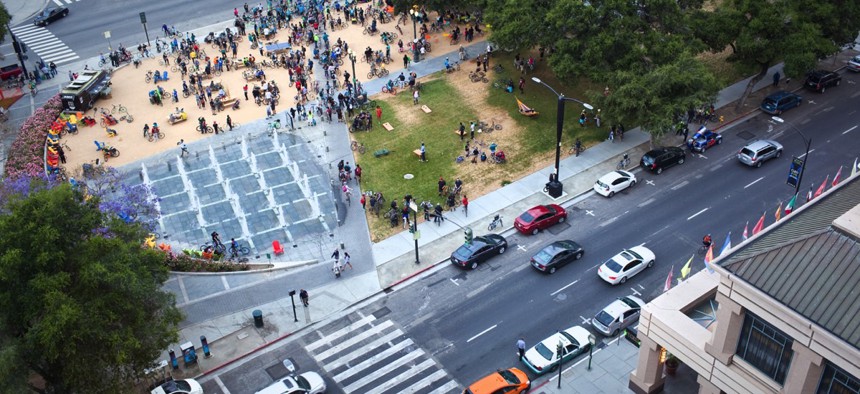San José Moves Forward on Free Broadband for Underserved School Families

San José, California
Three simultaneous pilots testing affordable broadband technology in tens of thousands of homes is what’s envisioned in the heart of Silicon Valley.
The San José City Council on Tuesday gave the green light to the development of a free, pilot Wi-Fi network for families in the East Side Union High School District, many of which are low income and underserved. East San José is home to a diverse and densely packed community, struggling to keep its head above water in one of the most expensive housing markets in the U.S.
Thousands of students in the area remain on the wrong side of the digital divide and struggle to do their homework at home because their parents can’t afford internet access, a significant barrier to educational and economic attainment.
“This really started with the leadership of Chris Funk, the superintendent,” Mayor Sam Liccardo told Route Fifty in an interview. “The district made the courageous decision a few years ago to focus on capital investment, rather than simply build buildings.”
In November 2014, voters approved Ed-Tech bonds, an innovative approach to financing the district’s ongoing technology needs, and subsequently Funk approached the city about partnering on affordable broadband for students.
Now that City Council is on board, a few things will happen in parallel.
San José will develop a digital inclusion strategy for the city while also constructing the network, the installation and maintenance of which will likely be contracted out.
Different broadband technology will be tested like Toronto, Ontario-based SmartWave Technologies’ boosters, which will ensure an outdoor Wi-Fi signal gets inside homes and will be supplied by the district to registered families along with passcodes.
ESUHSD set $2.7 million aside from its bond measure to cover the initial deployment, with financial assistance from the city, within one of three attendance areas: James Lick High School, William C. Overfelt High School or Yerba Buena High School. The initial test case will be chosen following a site survey assessing the technical feasibility of network deployment in each area.
“We’re focused on nuts and bolts: How reliable is the system?” Liccardo said. “We want to identify challenges in implementation, assess costs and unforeseen costs, and certainly assess quality of service because we know it’s not always as advertised.”
San José is also openly engaging with private sector partners for the second and third pilot phases—alternative technologies to bridge the city’s digital divide.
Facebook’s Terragraph initiative will bring free, 1- to 2-gigabit Wi-Fi internet to downtown San José before the tech giant deploys the technology to connect villages across India. They’re a possible ESUHSD partner, Liccardo said.
Other cities are working with Google Fiber on micro-trenching, another option.
The idea: launch three separate pilots cumulatively serving tens of thousands of families and then decide how to extend a broadband throughout the rest of the city.
“[I]n the Capital of Silicon Valley we should expect that all students have access to the internet in order to prepare for their future and the future of our community,” Vice Mayor Rose Herrera said in the city’s announcement. “With this deployment of a free Wi-Fi network to our ESUHSD families and students, we are taking the right steps toward producing a well-educated workforce for the 21st century.”
Dave Nyczepir is a News Editor at Government Executive’s Route Fifty and is based in Washington D.C.
NEXT STORY: Gallup Poll: Confidence in Local Government Trumps State Government






